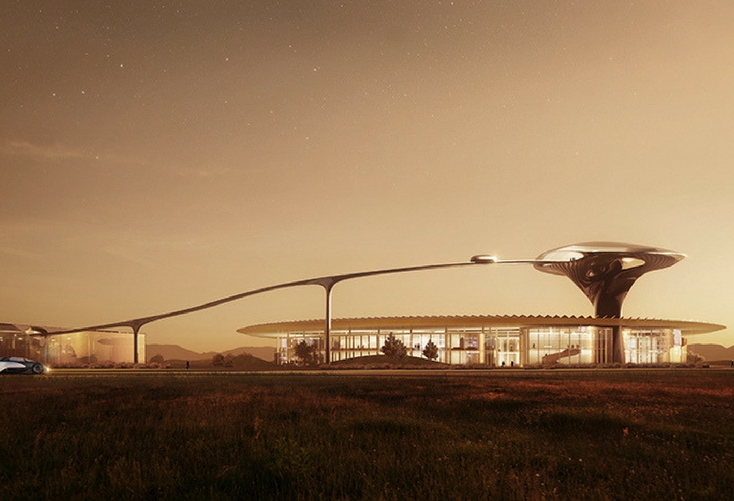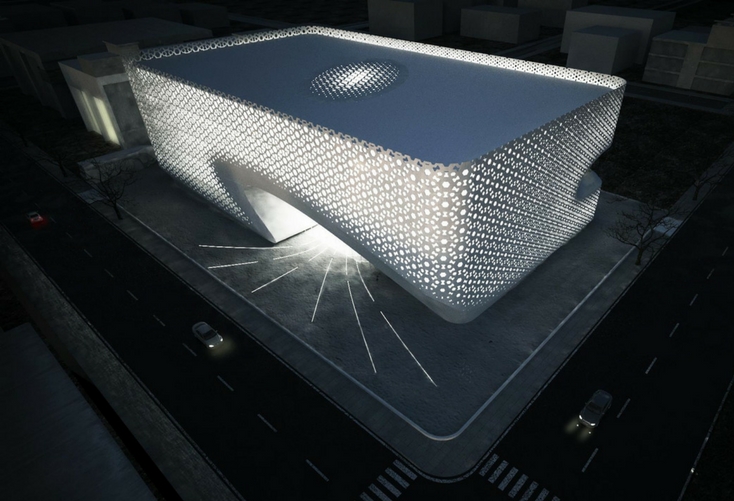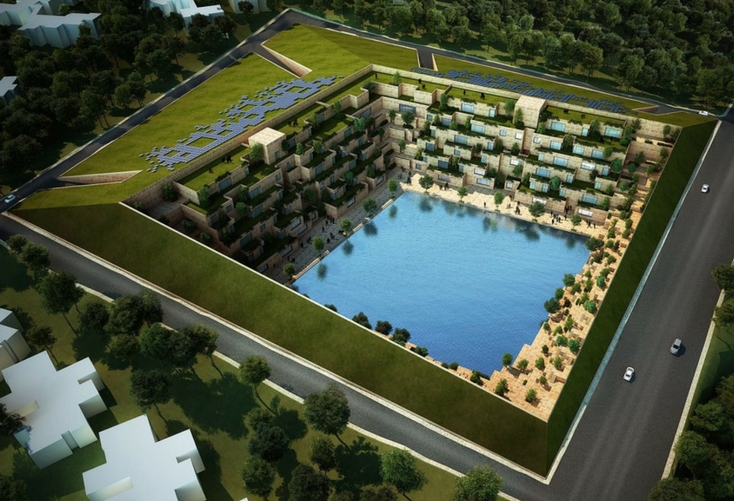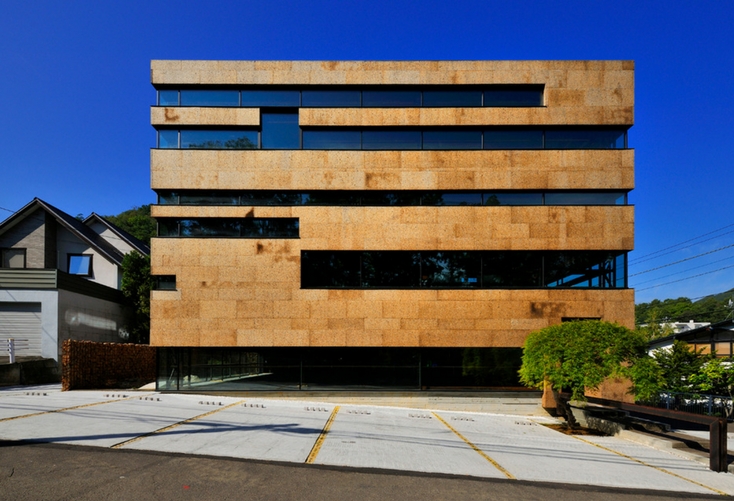- In this guest article from OfficeList, we take a closer look at 5 offices that wouldn’t look out of place in a sci-fi movie.
- As the saying goes, the only way to predict the future is to create it.
- Highlights include California’s spectacular Faraday Future campus, the Reservoir Office in India and HIGO in Japan.
Camila Restrepo writes for OfficeList, an office space rental agency that helps people around the U.S.A and Canada find the ideal office space for rent. With broad, online listings, companies can find all types of office configurations for their team.
Sci-fi movies usually give us an idea of how politics, transport, and even human behavior will be different in the future. However, it’s not very common for these movies to depict the way office space will transform the workforce or how unimagined materials would replace bricks and mortar. The good news is we don’t have to wait for script writers to invent “An Office Space Odyssey” for us to have an idea of this. In fact, there are office buildings that are currently being built or have been recently finished that display the office space of the future, today. Let’s take a look at some of them.
Faraday Future campus by MAD Architects (Mare Island, California)

The US auto company is planning to build a sci-fi inspired building (designed to challenge the status quo of today’s automotive market) in northern California, and the extraterrestrial design certainly stirs the imagination. The metallic buildings will count double-height ceilings, and internal courtyards that provide natural light and common areas to socialize. Throughout the facility, you’ll see large roof overhangs and operable glass facade systems to reduce solar gain and permit natural ventilation. Additionally, modulated power panels throughout the building will support the entire campus’ daily operational demands.
22 Bishopsgate, London by PLP Architecture

This 278-meter building will be the tallest in The City, London’s financial district. Although its height and glass-covered facade makes it stand out from the rest, its intent to become the “first vertical village” is what makes it an office of the future. Aside from becoming the workplace for 12,000 people, it will also have shops, restaurants, bars and medical and educational facilities.
“22 Bishopsgate has been designed to enhance the quality of life of its occupants by adding amenities that make the work experience more enjoyable and effective,” said Stuart Lipton of Lipton Rogers.
Punjab Kesari Headquarters, India by Studio Symbiosis

This headquarters combines aspects of traditional Indian architecture and contemporary office space. The traditional Indian façade pattern was created to reduce heat gain and optimize the façade opening ratio, ensuring no artificial lighting is required on a typical day. Plus, its hexagonal pattern makes it possible to have an animated facade along with an inherent meaning.
Reservoir, India by Sanjay Puri Architects

The Reservoir office in India is built around a naturally recessed pool, portraying inspiration from the stepped wells that have provided water for the Rajasthan state. Office space is arranged in a terraced formation on its northeast and northwest facing sides, which allows offices to have an open-air social space with trees fronting the reservoir. The pool serves to lower the temperature, and the runoff collected there supplies the water demand of the facility.
HIGO, Japan by Nakayama Architects

“Slim”, “thin” and “small” were the words that inspired this three-story structure. Its design materials include steel, Japanese bamboo, and recycled wine cork (which don’t catch fire even when torched). The result: a building with lightweight blocks that absorb sound and serve as a heat insulator. It will become a nature-clad structure as the cork will gradually get covered with moss and plant.
Part of its enchantment includes the way the designer has used books and documents as part of the interior design and the architecture, to create openings throughout the building.


 Dr. Gleb Tsipursky – The Office Whisperer
Dr. Gleb Tsipursky – The Office Whisperer Nirit Cohen – WorkFutures
Nirit Cohen – WorkFutures Angela Howard – Culture Expert
Angela Howard – Culture Expert Drew Jones – Design & Innovation
Drew Jones – Design & Innovation Jonathan Price – CRE & Flex Expert
Jonathan Price – CRE & Flex Expert












